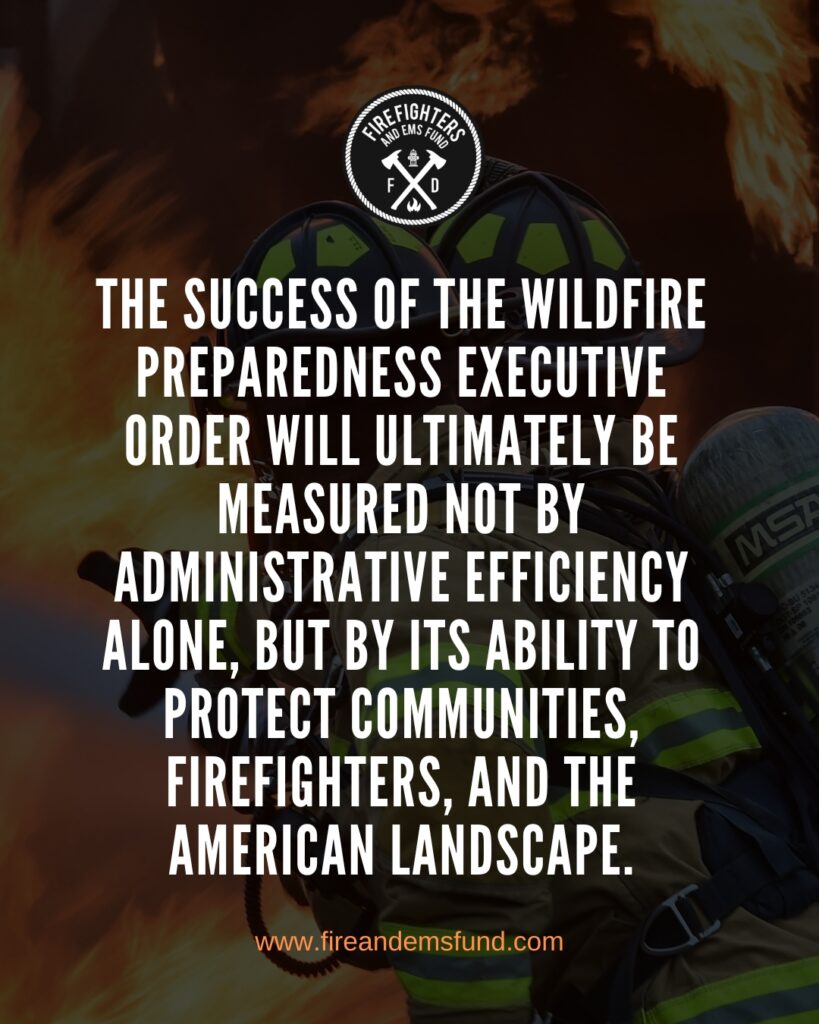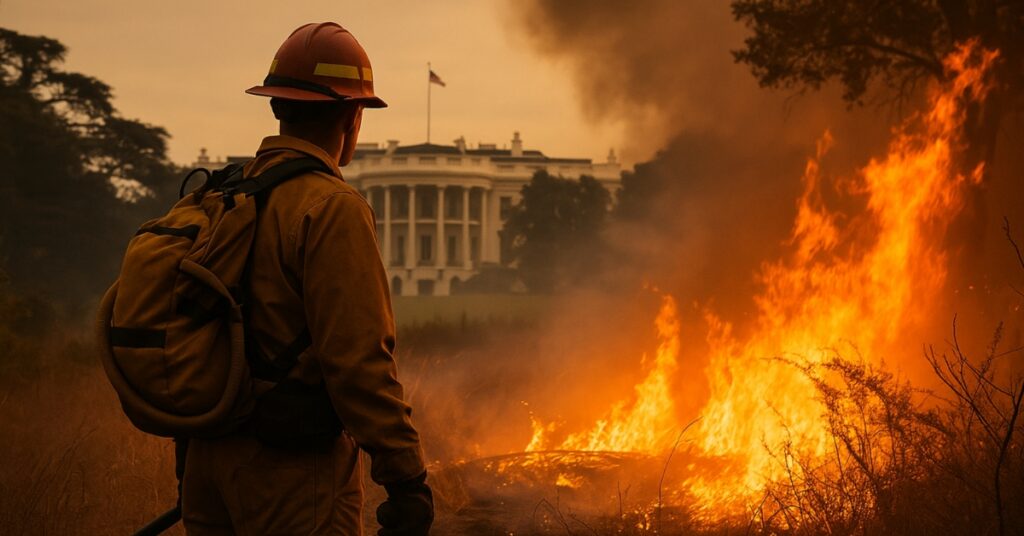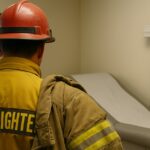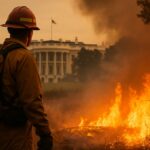The devastating Los Angeles wildfires of January 2025 killed at least 31 people and destroyed almost 17,000 structures. It may turn out to be among the costliest natural disasters in U.S. history, and it exposed several critical gaps in the nation’s wildfire response capabilities.
The political response was similarly large in scale, leading President Donald Trump to sign an executive order titled “Empowering Commonsense Wildfire Prevention and Response.”
Enacted in June, the 2025 wildfire executive order aims to fundamentally restructure the federal government’s approach to managing wildfires. It focuses on three primary goals: shortening response times through improved coordination, modernizing prevention strategies with advanced technology, and streamlining aid delivery to state and local agencies.
But will it be able to coordinate resources and decisions across multiple federal departments and agencies?
Key Provisions of the Executive Order
The executive order’s most ambitious provision centers on consolidating wildfire policy: it directs the Departments of the Interior and Agriculture to merge their wildland fire programs within 90 days. Far from simple, this move affects thousands of personnel currently working across five agencies and two Cabinet departments, placing them under a new Federal Wildland Fire Service under the U.S. Department of the Interior.
The next cornerstone of the federal wildfire reform initiative is a technological overhaul. The new Federal Wildland Fire Service will guide its actions by a combination of artificial intelligence, predictive mapping, ignition detection systems, and weather forecasting models. To achieve this, the new models will require the declassification of historical satellite data, which will be used to improve wildfire predictions.
Finally, the directive will also remove regulatory barriers that have historically slowed response efforts, simplifying the logistics needed for each state to act independently.
This goal includes some of the most titillating initiatives, including:
- Ordering the Department of Defense to prioritize the sale of excess aircraft and aircraft parts to support wildfire mitigation.
- Revising the environmental rules restricting prescribed burns or fire agents.
- Establishing hard performance metrics to assess the effectiveness of wildfire response across all levels of government.
What Are Key Stakeholders Saying About This?
The executive order has generated diverse reactions across the wildfire management community.
On the one hand, the International Association of Fire Fighters (IAFF) has largely endorsed the initiative, with General President Edward Kelly commending the order’s acknowledgment of the growing wildfire dangers and the crucial role of firefighters.
Other industry leaders have expressed support: Bridger Aerospace CEO Sam Davis stated that the company stands ready to support federal and state customers in implementing the new measures. He also highlighted the alignment between the executive order and increased federal funding proposals, including a threefold increase in baseline funding for the proposed U.S. Wildland Fire Service.
However, the praise is not unanimous, as significant concerns emerged from experienced officials and fire services. Former Forest Service chiefs warned that consolidation could increase the likelihood of catastrophic fires by disrupting established operations during active fire seasons. California Governor Gavin Newsom criticized the federal approach, arguing that simultaneous cuts to National Guard and Forest Service staffing undermine the executive order’s stated goals.

What Will It Take to Implement This?
The ambitious timeline and scope of the executive order face substantial implementation hurdles. Between budget cuts and ongoing early retirement programs, federal agencies find themselves severely understaffed right at the start of the 2025 wildfire season. The U.S. Forest Service alone has lost an estimated 7,500 employees this year.
Funding constraints compound these challenges. Over the past two years, many grants supporting wildfire risk reduction on state, local, and tribal lands were halved or eliminated entirely. From all the funds appropriated by Congress to support wildfire reduction work, the administration withheld $97 million. Approximately $43 million of these went toward employee separation programs rather than operational needs.
The restructuring and consolidation efforts will likely carry their own expenses, although right now, there are no conclusive estimates for it. This has triggered some uncertainty among stakeholders and fire service personnel preparing for what forecasters predict will be an above-normal fire season.
Firefighters & EMS Fund Perspective
From an emergency response funding perspective, the executive order’s focus on firefighter safety and streamlined coordination systems represents a positive development. The emphasis on modern technology and improved inter-agency communication could enhance operational effectiveness and reduce response times during critical incidents.
However, a rushed and underfunded implementation, especially during active fire season, could do more harm than good. Staffing deficits can compromise everything from meal services to medical support during large fires, potentially compromising the safety of firefighters.
While a thorough reorganization can yield a net positive, it must be implemented while maintaining local training standards and ensuring adequate staffing levels. The process must also preserve the specialized knowledge that currently enables effective wildfire response across jurisdictional boundaries.
Policy Recommendations and Next Steps
The most important feature needed right now is transparency, especially regarding the impact and costs of the impending merger. Firefighters and agency leaders alike at every level need to access a detailed timeline for the upcoming changes.
At the same time, the opportunity to revamp training programs, modernize equipment, and improve employee retention practices should not be missed. It will also be essential to monitor the outcomes of any changes, while preserving longstanding proven strategies, such as prescribed burns.
Ultimately, the success of the wildfire preparedness executive order will be measured not only by administrative efficiency but also by its ability to protect communities, firefighters, and the American landscape.







